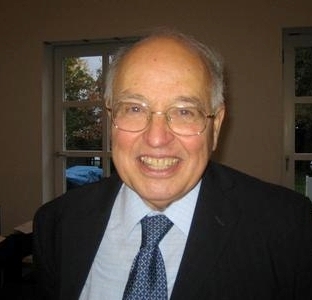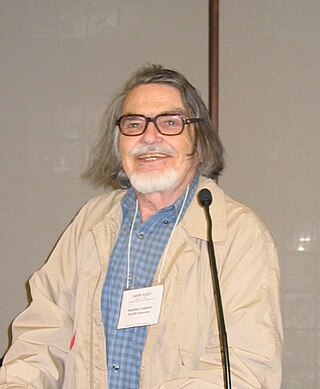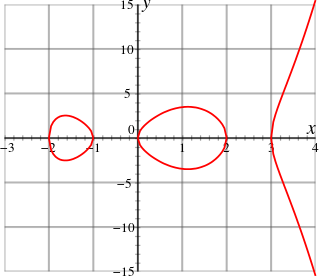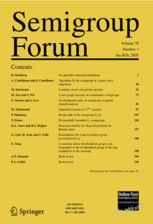Mathematics is a field of study that discovers and organizes methods, theories and theorems that are developed and proved for the needs of empirical sciences and mathematics itself. There are many areas of mathematics, which include number theory, algebra, geometry, analysis, and set theory.

Sir Michael Francis Atiyah was a British-Lebanese mathematician specialising in geometry. His contributions include the Atiyah–Singer index theorem and co-founding topological K-theory. He was awarded the Fields Medal in 1966 and the Abel Prize in 2004.

In mathematics, a semigroup is an algebraic structure consisting of a set together with an associative internal binary operation on it.
In abstract algebra, a magma, binar, or, rarely, groupoid is a basic kind of algebraic structure. Specifically, a magma consists of a set equipped with a single binary operation that must be closed by definition. No other properties are imposed.
In mathematics and computer science, the Krohn–Rhodes theory is an approach to the study of finite semigroups and automata that seeks to decompose them in terms of elementary components. These components correspond to finite aperiodic semigroups and finite simple groups that are combined in a feedback-free manner.

William B. Arveson was a mathematician specializing in operator algebras who worked as a professor of Mathematics at the University of California, Berkeley.

Joachim "Jim" Lambek was a Canadian mathematician. He was Peter Redpath Emeritus Professor of Pure Mathematics at McGill University, where he earned his PhD degree in 1950 with Hans Zassenhaus as advisor.

Anatoly Ivanovich Maltsev was born in Misheronsky, near Moscow, and died in Novosibirsk, USSR. He was a mathematician noted for his work on the decidability of various algebraic groups. Malcev algebras, as well as Malcev Lie algebras are named after him.
In mathematics, a locally compact group is a topological group G for which the underlying topology is locally compact and Hausdorff. Locally compact groups are important because many examples of groups that arise throughout mathematics are locally compact and such groups have a natural measure called the Haar measure. This allows one to define integrals of Borel measurable functions on G so that standard analysis notions such as the Fourier transform and spaces can be generalized.

In mathematics, arithmetic geometry is roughly the application of techniques from algebraic geometry to problems in number theory. Arithmetic geometry is centered around Diophantine geometry, the study of rational points of algebraic varieties.
In computational mathematics, a word problem is the problem of deciding whether two given expressions are equivalent with respect to a set of rewriting identities. A prototypical example is the word problem for groups, but there are many other instances as well. A deep result of computational theory is that answering this question is in many important cases undecidable.

Gerard J. Murphy MRIA was a prolific Irish mathematician. His textbooks are internationally acclaimed, and translated into different languages. He died from cancer in October 2006, at the age of 57.
Tudor Ganea was a Romanian-American mathematician, known for his work in algebraic topology, especially homotopy theory. Ganea left Communist Romania to settle in the United States in the early 1960s. He taught at the University of Washington.

Avraham Naumovich Trahtman (Trakhtman) was a Soviet-born Israeli mathematician and academic at Bar-Ilan University (Israel). In 2007, Trahtman solved a problem in combinatorics that had been open for 37 years, the Road Coloring Conjecture posed in 1970. Trahtman died in Jerusalem on 17 July 2024, at the age of 80.

John Robert Stallings Jr. was a mathematician known for his seminal contributions to geometric group theory and 3-manifold topology. Stallings was a Professor Emeritus in the Department of Mathematics at the University of California at Berkeley where he had been a faculty member since 1967. He published over 50 papers, predominantly in the areas of geometric group theory and the topology of 3-manifolds. Stallings' most important contributions include a proof, in a 1960 paper, of the Poincaré Conjecture in dimensions greater than six and a proof, in a 1971 paper, of the Stallings theorem about ends of groups.
Anton Kazimirovich Sushkevich was a Russian mathematician and textbook author who expanded group theory to include semigroups and other magmas.
Dona Anschel Papert Strauss is a South African mathematician working in topology and functional analysis. Her doctoral thesis was one of the initial sources of pointless topology. She has also been active in the political left, lost one of her faculty positions over her protests of the Vietnam War, and became a founder of European Women in Mathematics.
Zdeněk Hedrlín was a Czech mathematician, specializing in universal algebra and combinatorial theory, both in pure and applied mathematics.
Isbell's zigzag theorem, a theorem of abstract algebra characterizing the notion of a dominion, was introduced by American mathematician John R. Isbell in 1966. Dominion is a concept in semigroup theory, within the study of the properties of epimorphisms. For example, let U is a subsemigroup of S containing U, the inclusion map is an epimorphism if and only if , furthermore, a map is an epimorphism if and only if . The categories of rings and semigroups are examples of categories with non-surjective epimorphism, and the Zig-zag theorem gives necessary and sufficient conditions for determining whether or not a given morphism is epi. Proofs of this theorem are topological in nature, beginning with Isbell (1966) for semigroups, and continuing by Philip (1974), completing Isbell's original proof. The pure algebraic proofs were given by Howie (1976) and Storrer (1976).









